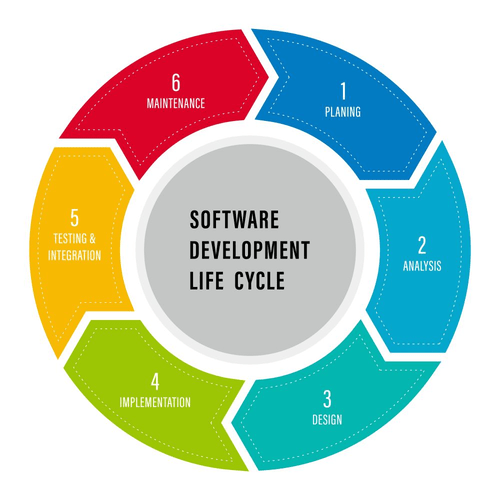The Stages of Group Formation for Team Development
The emotional energy that was spent on social positioning and learning can now be spent on work. From a work perspective, this stage normally sees individuals working in their own ways, often on their own tasks. There is little sharing of ideas and approaches, or feedback in relation to performance. Everyone is just doing their own thing, observing others, understanding hierarchies and trying not to rock the boat too much.

However, something’s not quite right, and everyone can sense it — unexpectedly, tension builds as the final stage looms large. Everyone’s pouring their heart and soul into the content production project. Going forward, the team expands on their inside jokes, enjoys long sessions of deep work, and creates the perfect working environment. Adam and Daniel edit each other’s articles, while Stella expresses her want to learn more about SEO best practices from Daisy. At this stage, the 4-strong team makes things happen with plenty of empathy. For example, Stella allows the rest of the team to suggest topics and angles for new articles more often.
Stage 1. Forming
Group norms are behaviors that become routine but are not explicitly taught or stated. In short, group norms help set the tone for what group members ought to do and how they ought to behave (Ellis & Fisher). Many implicit norms are derived from social norms that people follow in their everyday life. Norms within the group about politeness, lateness, and communication patterns are typically similar to those in other contexts.
Others have also adapted this model with additional stages, though we don’t focus on them here. However, it is crucial for them to learn the aspects of conflict resolution, communication, group decision-making and time management. Focus on building a shared understanding across your team and with stakeholders.
Scenario: You’re leading your team through the forming stage
The group establishes its own norms of behaviour and begin to trust each other. Moreover, as the group develops interpersonal skills, it becomes all the more skilled. After reading everything above, you have a pretty good idea where your team is at – but does the rest of the team agree? We all perceive things in our own unique way based on past experience and what we know now. When it’s time to celebrate meeting a milestone, consider indulging in a team dinner or day out doing something fun together.
In the first stage of the Forming, Storming, Norming and Performing model is Forming. It shows that the group has been successful in completing its pre-determined objective. Also, without effective training and support, the team may experience retarded growth. They are simply a group of people who have come together in an informal manner to achieve a particular goal.
Tuckman’s stages of group development
Problems and conflict, of course, do still arise, but they are dealt with effectively. The prime focus of the team is on problem solving and meeting goals; effectiveness is at its peak. Whether you identify as a team member or a team leader, understanding each of these roles is critical for creating an effective team. The most effective team member is one that knows he or she needs to work with his or her team members, a good team leader will know all of this like the back of their hand.

A redefinition of the team’s goals, roles and tasks can help team members past the frustration or confusion they experience during the Storming stage. Once a group receives the clarity that it so desperately needs, it can move on to the third stage of group development, known as the norming stage — where the group becomes a cohesive unit. Morale is high as group members actively acknowledge the talents, skills, and experience that each member brings to the group. A sense of community is established and the group remains focused on the group’s purpose and goal. Leadership is shared, and members are willing to adapt to the needs of the group.
Top Articles
And, if you liked this blog post, share it with someone who might find it useful. Tuckman’s four stages of group development are a really useful framework for both individuals and leaders to be aware of. Once storming has completed, the team start to settle down and normalize.

Changes, such as members coming or going or large-scale changes in the external environment, can lead a team to cycle back to an earlier stage. If these changes – and their resulting behaviors – are recognized and addressed directly, teams may successfully remain in the Performing stage indefinitely. During the Norming stage of team development, team members begin to resolve the discrepancy they felt between their individual expectations and the reality of the team’s experience. If the team is successful in setting more flexible and inclusive norms and expectations, members should experience an increased sense of comfort in expressing their “real” ideas and feelings.
Stage #1 — The Forming Stage
They are also overly positive about the project because it’s new — and new is always exciting. As a result, we can conclude that the Tuckman model spans culture, politics, and any other social sphere of our lives. If you’d like to learn more about us and what we do, you can join thousands of members of the World of Work community around the globe in receiving our occasional newsletter, the WOW Mail. In it, we’ll let you know what we’re up to and share hints and tips. In this online seminar, we talk through some useful practical models you can use to reflect on and prioritise your own wellbeing and that of your team.
- For illustration, the person with the largest knowledge about the project’s subject takes unofficial charge.
- If you reflect on them, they’ll tell you a cohesive story about their strengths, needs and performance.
- Many implicit norms are derived from social norms that people follow in their everyday life.
- They simplify the sequence and group the forming-storming-norming stages together as the “transforming” phase, which they equate with the initial performance level.
- This phase can become destructive to the team and will lower motivation if allowed to get out of control.
Members often have high positive expectations for the team experience. At the same time, they may also feel some anxiety, wondering how they will fit in to the team and if their performance will measure up. Team effectiveness is enhanced by a team’s commitment to reflection and on-going evaluation. In addition to evaluating accomplishments 4 stages of group formation in terms of meeting specific goals, for teams to be high-performing it is essential for them to understand their development as a team. In fact, each phase plays a critical role in the team’s progress — whether in short, medium, or long-term goals. That’s where Tuckman’s stages of group development yield immense results.
Stages of Group Development
Information flows seamlessly and is uninhibited due to the sense of security members feel in the norming stage. In this stage, team members are in the process of learning how to work together. As team members begin collaborating, conflicts may arise, whether that’s from clashing personalities or opinions on how a project should progress. Without a clear understanding of what role each individual plays on the team, relationships can get tumultuous as team members struggle to find a role that’s right for them. Supervisors of the team during this phase are almost always participating.

